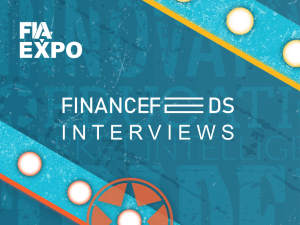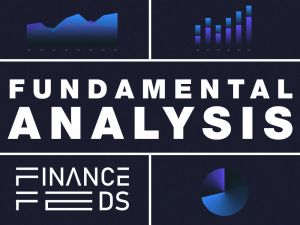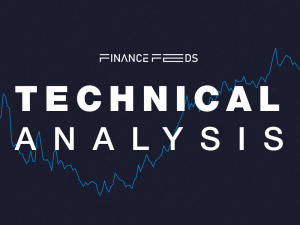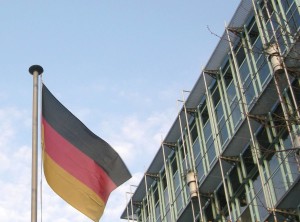FIA Expo 2023: Broadridge’s Roger Burkhardt talks about the future of AI, GPT in finance
The FIA Futures & Options Expo, hosted annually by the Futures Industry Association (FIA), this event gathers professionals, stakeholders, and experts from around the globe to discuss current trends, challenges, and innovations in the futures, options, and centrally cleared derivatives markets.

Today, we have the privilege of being joined by a distinguished guest from the forefront of financial technology innovation, Roger Burkhardt. As the Head of AI of Broadridge Financial Solutions, Inc. (NYSE:BR), a global provider of technology-based outsourcing solutions to the financial services industry, he oversees technological advancements and solutions that impact millions.
FinanceFeeds Editor-in-Chief Nikolai Isayev began the conversation by acknowledging Broadridge’s leadership in the field of artificial intelligence (AI). He highlighted some of Broadridge’s recent launches, which include BondGPT and TradeGPT and posed a question regarding the future of AI in finance.
Roger Burkhardt responded by confirming the huge impact AI is having on the finance sector. He shared his two-decade experience in AI and finance and noted a remarkable acceleration in the value delivery of new technologies. He reminisced about the traditional machine learning models and their lengthy development phases, contrasting them with the current rapid development process. As an example, he mentioned the BondGPT, which transitioned from ideation to production, serving 200 corporate bond traders, all within six weeks.
Burkhardt also discussed another essential aspect of modern AI: its democratization. Previously, specialized teams were required to build AI models for specific purposes. However, with tools like GPT, which is pre-trained and general-purpose, the need for specialized data science teams is reducing. This democratization means AI can be more widely adopted and adapted without the necessity of bespoke development. This shift in AI’s pace and its increasing accessibility and scalability is unprecedented in Burkhardt’s 20 years of experience in AI within the financial services sector.
Nikolai Isayev delved deeper into Broadridge’s motivations for its AI-based service rollouts, suggesting that the inspiration for such advancements could largely be due to a spike in demand from their client base.
Roger Burkhardt confirmed this observation, noting a clear and growing demand from Broadridge’s clients. These clients, in their quest to remain innovative, are looking to intelligently enhance their product offerings. Such demand is further driven by the end-users and customers of these products, who are increasingly seeking AI-integrated solutions. This demand is not just theoretical but is very much tangible and immediate. Feedback from traders, who are among the early users of these products, has been instrumental. They have shown a particular inclination towards interfaces enabled by Natural Language Models (NLM). This means they favor systems where interactions can happen through simple, everyday language, without needing specialized commands.
Burkhardt went on to give an example of how this is being appreciated in the real world. Corporate bond traders using BondGPT have shared their experiences where they’ve been able to obtain answers to complex research-related questions in mere seconds. When compared to traditional market data providers, which often come with expensive terminals and take considerably longer (from 10 to 30 minutes) to provide similar results, the advantage of Broadridge’s system becomes evident. Not only is it faster and more user-friendly, but it’s also designed to be intuitive. Furthermore, while the system is indeed revolutionary, Broadridge ensures it doesn’t compromise on data accuracy or security. Burkhardt emphasizes that data protection and the precision of information are crucial priorities for the company, regardless of how advanced the AI solutions become.
Nikolai Isayev brought up that Broadridge is actively testing various AI technologies, particularly focusing on the BRx Match model. He sought insights into the primary use cases Broadridge is aiming for initially and the expected trajectory thereafter.
Roger Burkhardt commenced his response by highlighting the centrality of data to all AI ventures. Drawing parallels to popular opinions that label data as the ‘new oil,’ he underscored the importance of harmonized, accurate, and consistent data. The objective is to ensure uniform definitions and meanings across different contexts; for instance, ensuring that the term ‘order’ holds a consistent definition across asset classes and that terms like ‘sale’ or ‘exception issue’ retain standardized interpretations.
The BRx investment is indicative of Broadridge’s dedication to data standardization across varied asset classes and even beyond specific product systems. The team behind BRx, having a rich background of collaborating with multiple vendors, prioritizes the harmonization of data, leading to a standardized data set.
Burkhardt explained that this data serves manifold purposes. In the trading context, it aids traders in assessing the progression of their orders, particularly useful for agency traders overseeing their order sets. In the operational realm, professionals can swiftly identify discrepancies that require rectification. Furthermore, it streamlines the process of trade and transaction reporting to regulatory authorities. An exemplar utility he provided was the system’s capability to furnish exact responses to regulators, such as elucidating transactions on specific days, with the Chinese New Year being a case in point from a recent demonstration.
In a broader perspective, Broadridge’s focal areas with respect to AI are middle to back-end product applications. Within the company’s operations, generative AI plays a pivotal role in responding to client queries, expediting product customization processes, and determining the activation of specific features tailored to different clients like prime brokers.
In summary, Broadridge’s AI-centric initiatives encompass a dual-fold domain: on one hand, product development, and on the other, a combination of customer service, operational efficiency, and internal process enhancements.
Nikolai Isayev acknowledged the vast potential of AI across different sectors, particularly in the global financial markets. However, he pointed out that some experts have expressed reservations about AI’s possible downsides. He inquired if, beyond the usual concerns about data security and intellectual property, there are other risks linked to AI in the financial services sector.
Roger Burkhardt conceded that the use of AI does come with inherent risks, especially when serving individual investors or making consequential decisions like loan approvals. One significant risk is the possible bias in the training data used to develop such models. Given the regulatory frameworks, such as the Fair Credit Reporting Act in the U.S., it’s clear that there have been efforts over the years to address such concerns. Drawing from his consulting experience, Burkhardt highlighted a pressing challenge: ensuring AI models do not exacerbate biases that might already exist in human decision-making.
However, Burkhardt remained optimistic, believing that there are tools and strategies to curtail these risks. He mentioned the existence of “safe harbors” or areas in AI applications where the risk is minimal or entirely absent. While certain decisions, especially those impacting individual investors, must be approached with meticulous caution, many other domains offer less complex challenges. In these areas, the primary focus is to maintain data accuracy and confidentiality.
Burkhardt emphasized the importance of hands-on learning across various professional roles. To support this, Broadridge has built a platform fortified with safety mechanisms to encourage experimentation. The internal platform, termed “broad GPT”, is designed to integrate with externally-hosted SaaS solutions like OpenAI and top-tier open-source models from leading tech companies like Meta and Google. These models are highly competitive, often outperforming each other.
Nikolai Isayev touched upon Broadridge’s recent unveiling of BRx Match, drawing attention to the increasing transaction volumes across a range of asset classes and the subsequent growth in both structured and unstructured data. He sought a clearer understanding of how BRx Match operates for the benefit of the listeners.
In response, Roger Burkhardt began by positioning BRx Match as an evolution of Broadridge’s long-standing proficiency in data reconciliation and the identification of exceptions. While Broadridge has historically tackled complex reconciliation issues, it recognized an emerging demand for solutions that catered to both intricate scenarios and simpler, more self-service situations.
Addressing these varied requirements, Broadridge revamped the offering, presenting it under a modern and user-friendly interface. This adaptability ensures that a user seeking a basic self-service solution finds it straightforward and intuitive. In contrast, users facing more complex matching challenges can access a suite of powerful features tailored to their needs.
However, Burkhardt emphasized that the core potency of BRx Match lies in its integration capabilities. In the realm of data reconciliation, the ultimate goal is achieving a perfect data match. However, inevitable discrepancies, termed ‘breaks’, can occur. BRx Match is adept at integrating these breaks into Broadridge’s broader Operations Console. This integration offers end-users a unified view, empowering them to systematically prioritize and address these breaks. Furthermore, by harnessing advanced tools like GPT, Broadridge aids operations staff in deciding the sequence in which breaks should be addressed and pinpointing interconnected issues.
Nikolai Isayev broached the topic of recent regulations introduced by the SEC, particularly the one rolled out in July which centered on broker-dealers and investment advisors. This regulation focused on potential conflicts of interest arising from the application of predictive data analytics in their interactions with investors. He was keen to understand Broadridge’s standpoint on this matter.
Roger Burkhardt clarified that Broadridge typically refrains from engaging in direct lobbying endeavors with regulatory entities like the SEC. Nevertheless, he conveyed some general sentiments stemming from their interactions with clients. A prevailing theme among their clientele is the wish for the SEC’s proposed regulations to be articulated with greater precision. As it stands, many view the regulations as excessively broad in their scope.
Drawing from Broadridge’s historical engagements, particularly in the realm of countering biases in lending decisions over the past two decades, Burkhardt underscored the necessity for the SEC to sharpen its focus. Should the guidelines remain too all-encompassing or ambiguous, there exists the peril of inadvertently hampering innovation.
Burkhardt went on to emphasize that individual investors are poised to derive advantages from the cutting-edge insights and tools birthed by predictive analytics. Striking a judicious balance is pivotal – while it’s imperative to ensure these tools fulfill their envisioned role, it’s equally vital to remain vigilant against potential drawbacks. Burkhardt concluded by expressing interest in tracking the trajectory of this regulation as it undergoes further refinement in the days ahead.
Nikolai Isayev observed that Broadridge’s clients are likely in active dialogue with the company, offering their perspectives and feedback in light of the regulations proposed by entities such as the SEC. He posited that these clients probably collaborate with Broadridge to gain a clearer understanding of the dynamic regulatory environment, aiming to establish a more standardized framework.
Roger Burkhardt affirmed this notion. He emphasized Broadridge’s commitment to fostering a collaborative partnership with its clients and highlighted the company’s dedicated role as a thought partner in these endeavors. While Broadridge’s clients are the primary entities conveying their sentiments directly to commissions like the SEC, Broadridge supports them by sharing its extensive expertise, especially in domains like data management and the deployment of AI.
As we conclude our chat and the expo draws to a close, Nikolai Isayev sought one key insight or takeaway from Broadridge’s Head of AI for the attendees to reflect upon post the event.
Roger Burkhardt shared a compelling observation derived from an AI panel survey conducted during the expo. They had posed a query about professionals’ engagement levels with generative AI. The feedback was quite revealing, with approximately half of the respondents indicating their current use or active exploration of generative AI technologies. Although only a minority were in the operational phase with this technology, a big proportion were in the nascent stages of their exploration. Burkhardt found this data particularly striking, given that generative AI has been in the limelight for less than a year. This quick uptake underlines the swift momentum at which technology and its corresponding adoption are progressing. Burkhardt concluded by emphasizing the rapid evolution of the industry, underlining the ever-growing need for professionals to stay updated and flexible in their approach.









